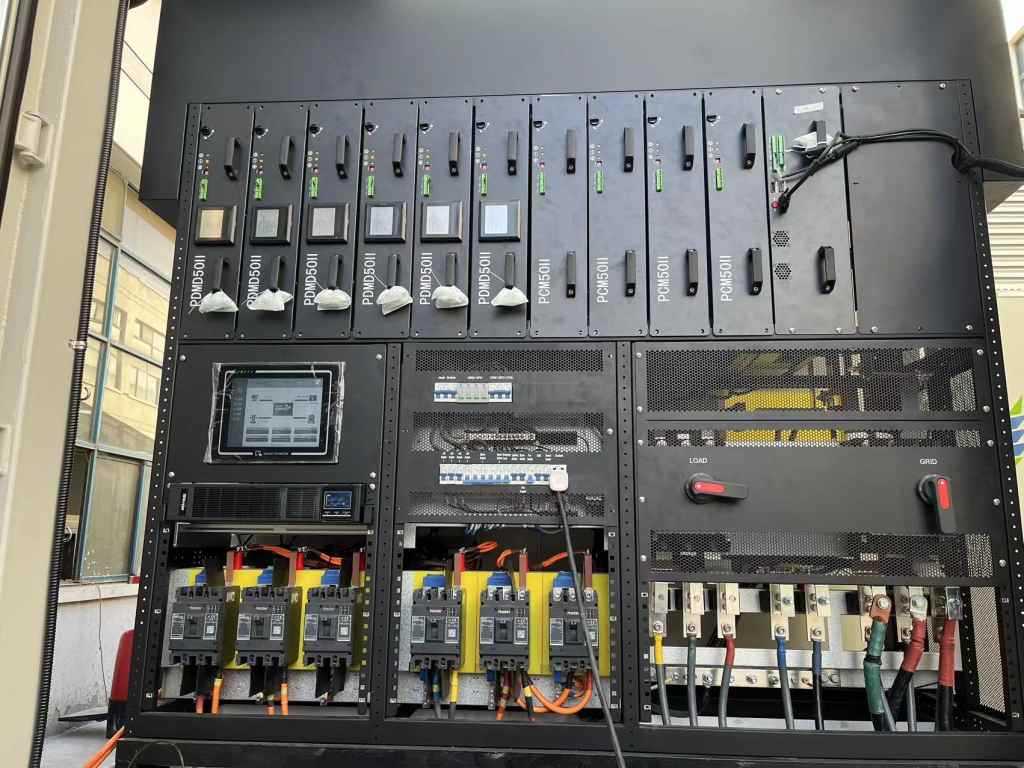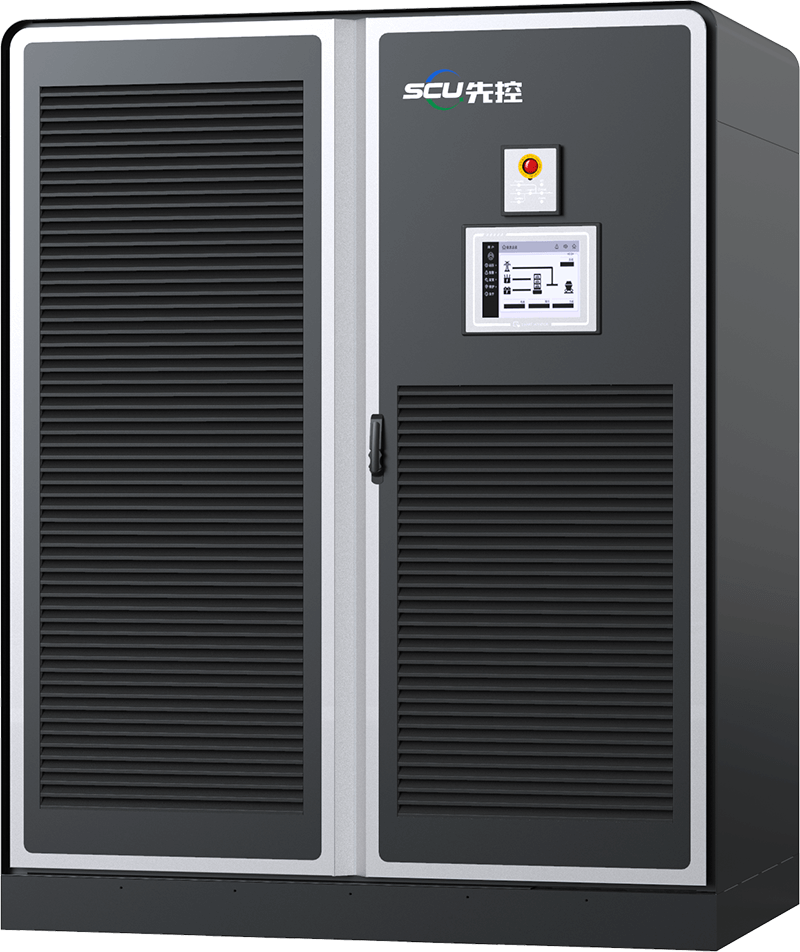In fact, many people regard energy storage inverter and power conversion system (PCS) as the same thing. This article asks you how to distinguish them.
First of all, the PCS looks like this! (The size of PCS with different powers will be different.)
Some people must be curious: What does it look like when opened? Something like this! (The appearance is different, but the content is roughly the same.)

Next, let’s look at the differences between PCS and energy storage inverter.
Different functions
The PCS is the core module in electrochemical energy storage. It is mainly used to store electrical energy in the grid into energy storage devices such as batteries and release it to the load when needed.
The inverter is a device that converts direct current into alternating current. It is usually used in renewable energy power generation systems such as solar energy and wind energy. An inverter takes DC power from a battery pack or other source, regulates and controls it, and converts it into AC power for use on the power grid.
The PCS has the function of switching DC and AC, and it also has the function of controlling charging and discharging. There are even several grid-connected charging and discharging modes. It can be said that PCS has the function of an energy storage inverter, but it cannot replace the converter.
Working principle
The working principle of PCS is somewhat similar to that of inverter, but there are also some differences. The PCS is located between the battery pack and the power grid, realizing a two-way conversion of electrical energy. That is, when discharging, the DC power of the battery can be converted into AC power and transmitted to the power grid, and when charging, the AC power of the power grid can be rectified into DC power for charging.
Working steps: First, obtain DC power from the battery pack; then, through processing such as filter circuits, input the DC power into the DC-AC converter; finally, by controlling the semiconductor components in the DC-AC converter, the input DC power is converted into appropriate AC power and input it into the load terminal.
The working principle of the inverter is to convert direct current into alternating current. Working steps: First, obtain DC power from the battery pack or other sources; then, after regulation and control, convert the DC power into appropriate AC power; finally, input the converted AC power into the power grid to supply the load.
PCS is the core component of the energy storage system, and its cost ratio is second only to the battery pack.
Different PCS power levels are used in different application scenarios. Let’s look at it from childhood to adulthood.
- First of all, household PCS is mostly used in conjunction with household photovoltaics and can be used as an emergency power supply, etc., and the power is usually ≤10kW;
- Secondly, industrial and commercial PCS is combined with distributed photovoltaic power generation, and the surplus electricity for self-use is connected to the grid, or peak shaving and valley filling are used to make profits from the difference in peak and valley electricity prices. It is also used to expand capacity, and the power is usually 20kW, 30kW, 50kW, and 100kW;
- Finally, centralized. High-power centralized PCS uses a converter designed with high-power modules. It has a small size, high conversion efficiency, and uses fewer power devices at the same power. The power is usually 200kW, 500kW, and 1250kW;
In the future, as the capacity of energy storage power stations continues to expand, the power of PCS will also increase. The current mainstream powers of PCS on the market include 200kW, 250kW, 500kW, and 630kW. In 2020, some manufacturers launched products with a power level of 2-3MW, and the power has been continuously improved.
In addition, different application scenarios have different requirements for PCS. For example, the industrial and commercial energy storage user side requires flexibility and efficiency; frequency modulation applications require stability, reliability, and large capacity; large energy storage power stations require small size and are easy to integrate. Therefore, PCS products will be more diversified in the future and differentiated for subdivided application fields.
To sum up, PCS and energy storage inverter play complementary roles in energy storage systems. PCS is used to convert DC power from the energy storage system into AC power to supply power or inject excess power into the grid. Instead, an energy storage inverter is used to convert electrical energy from the grid or other AC power source into DC power to charge energy storage devices.
The selection and integration of these two devices depend on the specific application requirements and system design. Understanding these will help to better apply and manage these two devices and provide a guarantee for the safe and stable operation of the power system.

